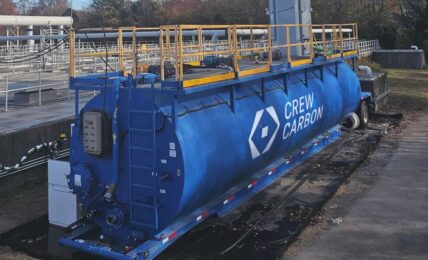Rolls-Royce and easyJet announced today the first-ever run of an aircraft engine powered by hydrogen. The achievement follows the launch this year by the two companies aimed at demonstrating the potential of hydrogen to power a range of aircraft from the mid-2030s.
Grazia Vittadini, Chief Technology Officer, Rolls-Royce, said:
“The success of this hydrogen test is an exciting milestone. We only announced our partnership with easyJet in July and we are already off to an incredible start with this landmark achievement. We are pushing the boundaries to discover the zero carbon possibilities of hydrogen, which could help reshape the future of flight.”
The aviation industry has come under scrutiny as a significant source of greenhouse gas (GHG) emissions, responsible for 2-3% of global emissions, with that figure potentially rising dramatically over the coming decades if no action is taken. Several initiatives are being pursued in order to address the climate impact of the industry, typically involving efforts to improve aircraft efficiency, develop sustainable aviation fuels (SAF), or create aircraft utilizing low or zero carbon propulsion systems such as electric or hydrogen-based.
While many initiatives are currently targeting areas allowing for more rapid sector decarbonization, such as electrified propulsion or SAF, hydrogen is viewed by some in the industry as a more promising long-term solution, given its potential to be produced through carbon-free methods, and its energy attributes, containing significantly more energy per weight than jet fuel.
The ground test was conducted on an early concept demonstrator and took place at an outdoor facility at MoD Boscombe Down, UK, using a converted Rolls-Royce AE 2100-A regional aircraft engine and a supply of green hydrogen from the EMEC (European Marine Energy Centre).
The test was conducted using green hydrogen, created by wind and tidal power, and supplied by EMEC (European Marine Energy Centre).
Johan Lundgren, CEO of easyJet, said:
“This is a real success for our partnership team. We are committed to continuing to support this ground-breaking research because hydrogen offers great possibilities for a range of aircraft, including easyJet-sized aircraft. That will be a huge step forward in meeting the challenge of net zero by 2050.”
The test follows recent commitments by both companies to support the decarbonization of air travel, including plans by Rolls-Royce to introduce low or zero emission products, ranging from hydrogen fuel cells and microgrids to hybrid-electric and fully electric technologies, and the release this year of easyJet’s net zero roadmap, outlining the company’s plan to address its climate impact and achieve net zero emissions flying by 2050.
Following analysis of this early concept ground test, the companies said they will continue to plan a series of rig tests prior to a full-scale ground test of a Rolls-Royce Pearl 15 jet engine.
Grant Shapps, Secretary of State for Business, Energy and Industrial Strategy, said:
“The UK is leading the global shift to guilt-free flying, and today’s test by Rolls-Royce and easyJet is an exciting demonstration of how business innovation can transform the way we live our lives. This is a true British success story, with the hydrogen being used to power the jet engine today produced using tidal and wind energy from the Orkney Islands of Scotland – and is a prime example of how we can work together to make aviation cleaner while driving jobs across the country.”
The post Rolls-Royce, EasyJet Perform First Ever Run of an Aircraft Engine on Green Hydrogen appeared first on ESG Today.



